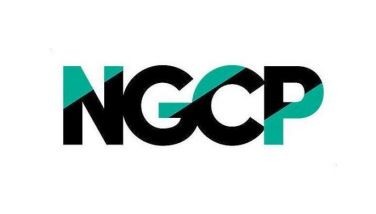KBP bucks NTC plan to allow more FM stations
January 7, 2003 | 12:00am
The Kapisanan ng mga Brodkasters ng Pilipinas (KBP) is opposing a plan of the National Telecommunications Commission (NTC) to further open up the FM radio industry and allowing more players to come in.
Reliable sources told The STAR that the KBP is preparing a position paper for submission to the NTC explaining its reasons for opposing NTC’s plan to reduce the current band separation of 800 kilohertz (khz) to only 400 khz which could easily double the current number of players.
A source from the broadcasters’ association explained that there are basically two reasons why they are opposing government’s plan, which will be contained in a memorandum circular to be issued by the NTC.
The first reason is technical since there is no assurance that reducing the band separation will not result in signal interference. At present, there is a gap of 800 khz between the frequency bands occupied by each FM station. For instance, RX93.1, is followed by 93.9 (a 0.8 interval). Citylite 88.3 is followed by 89.1. Within the 800 khz interval, no radio station is allowed to operate under current rules.
The second reason is economics. More players will mean increased competition for dwindling advertising revenues. "If implemented, this will be the last straw that could kill the industry," a KBP official told The STAR.
The KBP official explained that there are now many FM radio companies that are losing money because of the dwindling advertising budget of many companies.
According to the NTC, there is now a hybrid type of transmission wherein digital audio signals can be transmitted together with analog audio signals, the type currently in use. The digital signal is placed within the analog signal to allow for simultaneous transmission. This means there is no need to introduce a new frequency spectrum because digital will work on the existing spectrum. More importantly, there is no interference of signals which is the main concern of station owners.
This new technology, according to the NTC, now makes possible a band separation of 400 khz. The present NTC regulation dictates that FM stations must have a separation of at least 800 khz to avoid signal interference.
Those who support the NTC’s move have cited a recent study by the International Telecommuni—cations Union (ITU), the United Nations agency tasked to oversee global standards in communications, which concluded that 400 khz gap using digital audio signals will not cause interference. Thus, countries like the United States, the United Kingdom, Singapore, and Thailand are now using the 400-khz standard on digital audio technology.
"But we can argue that it will create interference because this is what our engineers tell us. NTC’s engineers say otherwise," the KBP official said.
Reliable sources told The STAR that the KBP is preparing a position paper for submission to the NTC explaining its reasons for opposing NTC’s plan to reduce the current band separation of 800 kilohertz (khz) to only 400 khz which could easily double the current number of players.
A source from the broadcasters’ association explained that there are basically two reasons why they are opposing government’s plan, which will be contained in a memorandum circular to be issued by the NTC.
The first reason is technical since there is no assurance that reducing the band separation will not result in signal interference. At present, there is a gap of 800 khz between the frequency bands occupied by each FM station. For instance, RX93.1, is followed by 93.9 (a 0.8 interval). Citylite 88.3 is followed by 89.1. Within the 800 khz interval, no radio station is allowed to operate under current rules.
The second reason is economics. More players will mean increased competition for dwindling advertising revenues. "If implemented, this will be the last straw that could kill the industry," a KBP official told The STAR.
The KBP official explained that there are now many FM radio companies that are losing money because of the dwindling advertising budget of many companies.
According to the NTC, there is now a hybrid type of transmission wherein digital audio signals can be transmitted together with analog audio signals, the type currently in use. The digital signal is placed within the analog signal to allow for simultaneous transmission. This means there is no need to introduce a new frequency spectrum because digital will work on the existing spectrum. More importantly, there is no interference of signals which is the main concern of station owners.
This new technology, according to the NTC, now makes possible a band separation of 400 khz. The present NTC regulation dictates that FM stations must have a separation of at least 800 khz to avoid signal interference.
Those who support the NTC’s move have cited a recent study by the International Telecommuni—cations Union (ITU), the United Nations agency tasked to oversee global standards in communications, which concluded that 400 khz gap using digital audio signals will not cause interference. Thus, countries like the United States, the United Kingdom, Singapore, and Thailand are now using the 400-khz standard on digital audio technology.
"But we can argue that it will create interference because this is what our engineers tell us. NTC’s engineers say otherwise," the KBP official said.
BrandSpace Articles
<
>
- Latest
- Trending
Trending
Latest
Trending
Latest
Recommended



























